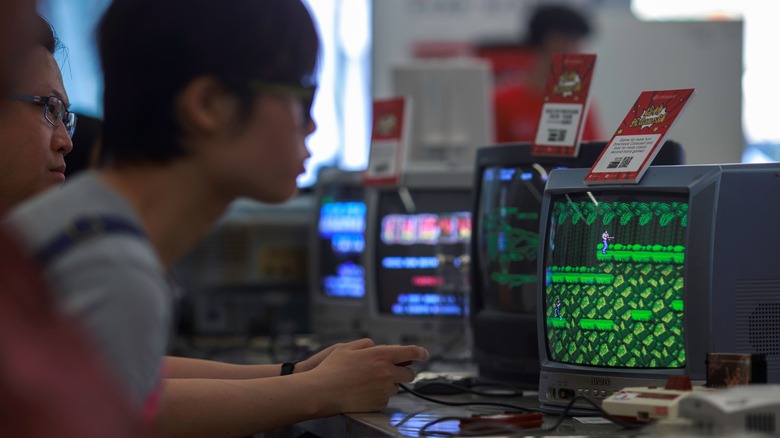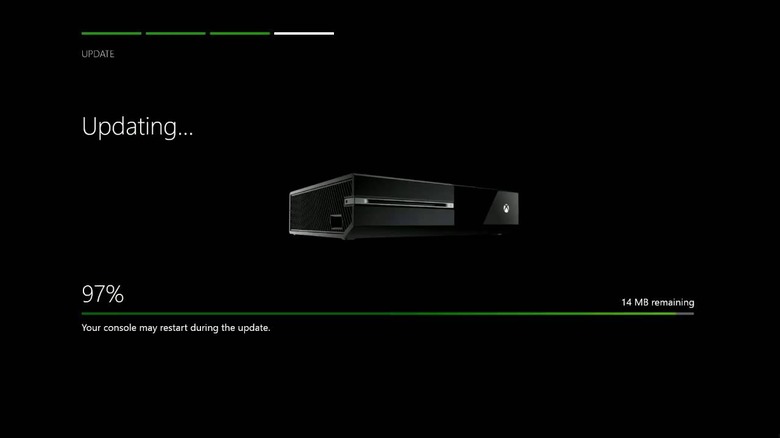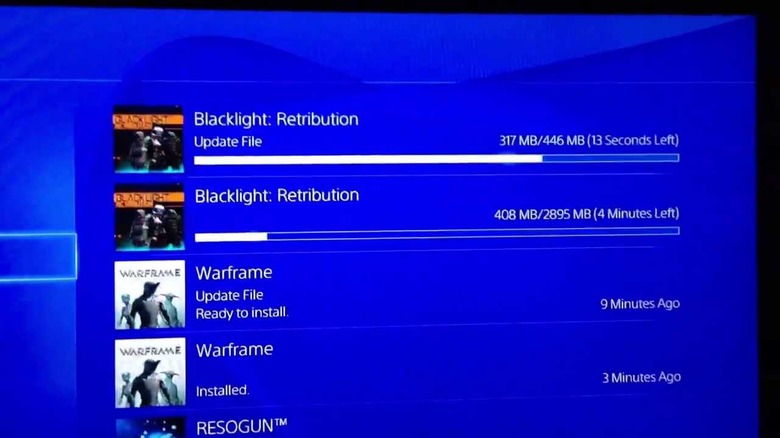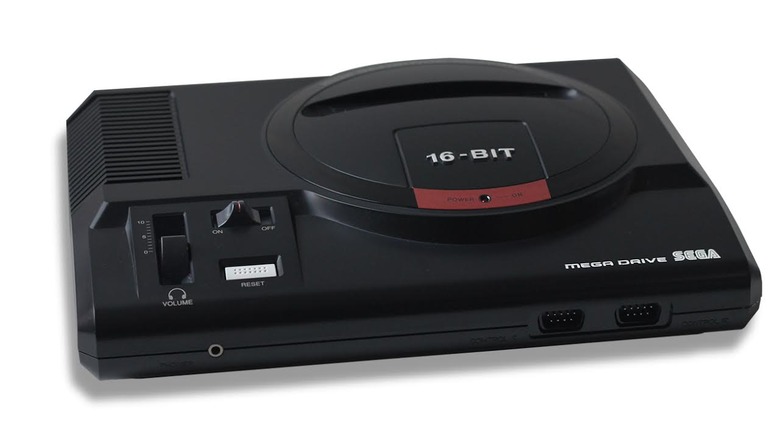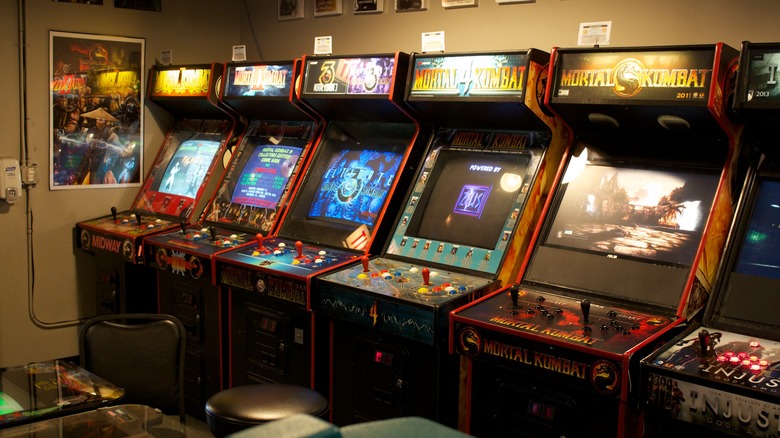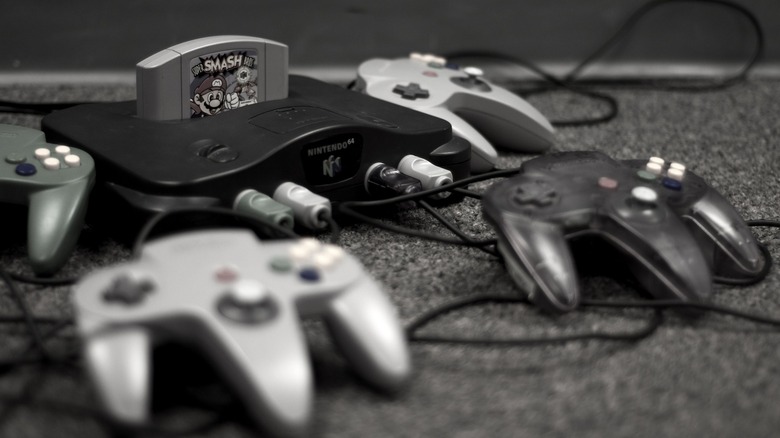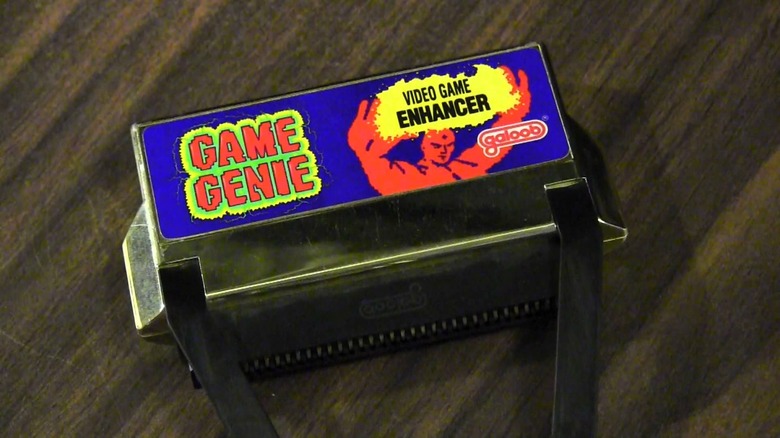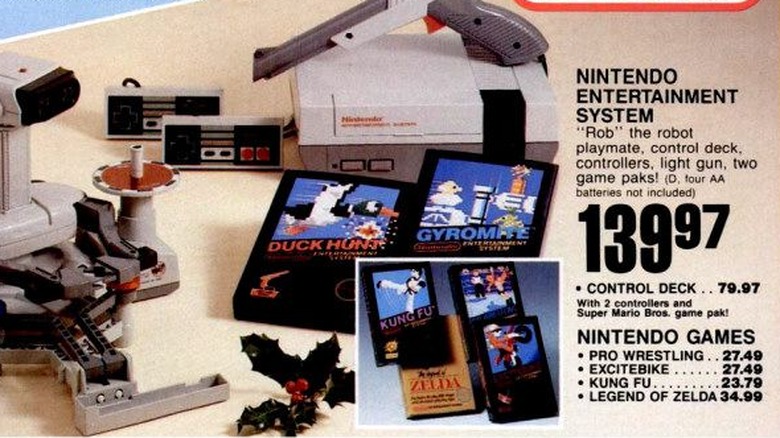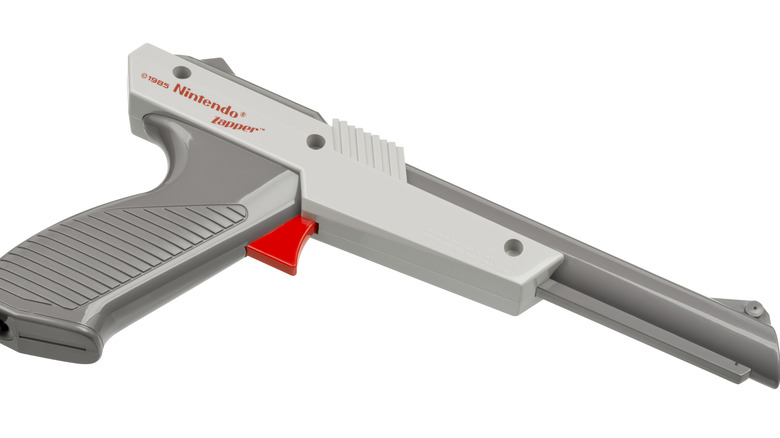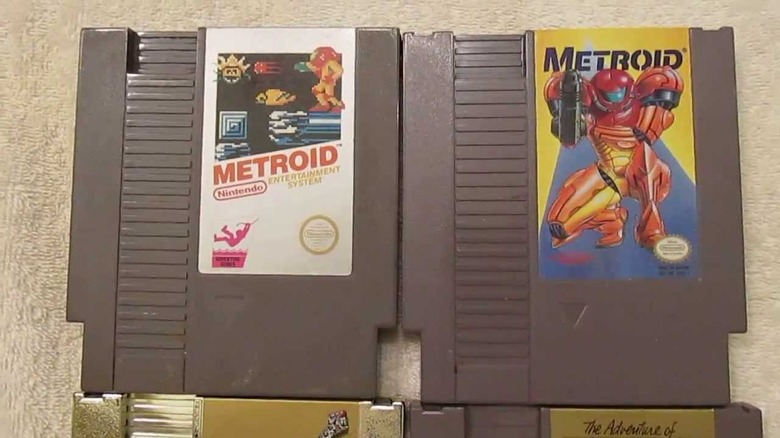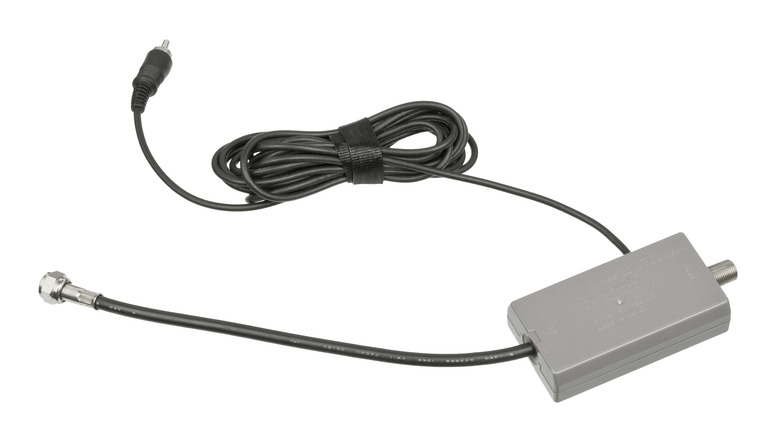Things Old Gaming Consoles Could Do That Your New One Can't
When it comes to video games, newer isn't always better. One only has to look at the retro renaissance that's been taking place over the past few years to realize that we, as gamers, are biting extra hard on our nostalgia for what's come and gone. Newer games can definitely do some awesome things, there's no question. But there's something special about the straightforwardness of a pixelated 2D platformer when compared to, say, an Assassin's Creed game with a huge open world and a million blinking map icons.
Game systems have improved dramatically over time, too, but that same "newer isn't always better" rule applies. In our leaps forward, we've lost some things, and the newest generation of consoles just can't replicate the unique qualities of the older ones. Past-era consoles still have some tricks up their sleeves that more current ones don't, and below, we're going to tell you all about them.
They worked out of the box
Think back to your Christmas mornings from several decades ago (if you're old enough to do that). There's a chance you spent one of them tearing the wrapping paper off of a Nintendo Entertainment System or a Sega Genesis, gazing with glee upon your new video game toy, imagining all of the fun to be had once you got it hooked up. And with consoles of the past, the time between opening the box and playing a game could be just a few minutes.
That's not the case these days.
Newer consoles come with more complex operating system software, and development on a system OS continues long after machines hit the production line. This means that you're likely to be hit with a big day-one patch update once you get your new game system plugged in and connected to the internet. Depending on the size of the update, you could be waiting several hours before you're finally able to load up a game and get to work.
Makes Christmas morning a lot less exciting, doesn't it?
They let you play games right away
And that system update isn't the only delay you'll have to put up with on a new game console.
With older consoles, loading up a game took a matter of seconds. You grabbed the cartridge off of your shelf, stuck it in the cartridge slot, and hit the power button on your system. Boom, done. On newer systems like the PlayStation 4 and Xbox One, however, installing a game to the hard drive is mandatory. You'll need to wait for your console to pull all of the data off a disc and copy it to internal storage. And once that's done, there's a good chance the game you just installed has updates or patches that need to be downloaded and applied. That's even more time spent waiting around when you'd much rather be playing your game.
These required installations and software updates slow the whole process down, and they take away the spontaneity that makes gaming so fun. No longer can you bring a game over to a buddy's house and throw down in some Halo. Now you have to put the disc into the console, choose "Install," and maybe play a game of Monopoly while you wait.
They had physical reset buttons
Every game console has glitched out at one point or another. On consoles in the 8-bit and 16-bit generations, you'd see plenty of instances where a game simply froze, with its graphics stuck in one place and its soundtrack confined to one long, never-ending note. But fixing a problem on an older console was easy. You simply hit the physical reset button on the system, knowing that you'd lose your progress, but at least taking solace in the fact that you could get back in the action quickly.
On newer consoles, a system reset is far more complex. If a game locks up, or if features of the console aren't working properly, the system either needs to be restarted through its operating system, or completely powered down using its power button. And in order to get back to gaming, you need to power the console on again, allow the operating system to load up, and then select the game you were playing in the console's menu. Compared to older systems, a restart on a newer machine takes much longer.
Technology has certainly brought us prettier games with more features. But it's also done away with those moments of instant gratification that we took for granted.
They recreated the arcade experience at home
The dream of owning an 8-bit or 16-bit home console was that you could play arcade-quality games in your living room or bedroom. And for the most part, that dream held up. When Mortal Kombat was popular in arcades, it was also a hot seller on both the Super Nintendo and the Sega Genesis. The same could be said for Street Fighter II, which dominated Chuck E. Cheeses and bowling alley arcades as well as the Super Nintendo. Even driving games like Cruis'n USA found their way to home game consoles, albeit without stick shifts and steering wheels.
These days, however, arcade games are a dying breed. The arcade board is no longer the platform that pushes video games forward — it could be argued that honor now belongs to the PC. We don't find out about hot new titles a quarter at a time outside the movie theater, but instead, from websites and social media. And if you're able to find an arcade today, you might be surprised to discover that it features many of the same games you played growing up.
The truth is, the types of arcade games we played as kids are on their way out. Which means the best that today's consoles can do is take us back in time through retro ports and backward compatibility.
They let you use more than one wired controller easily
When we look back on what we now call retro consoles, it's hard not to think of the good times we've had playing with others. Whether it was a head-to-head match-up or couch co-op, it was always fun to gather around a TV and play some games with friends. And those older consoles made it so easy! You could plug multiple wired controllers into all of them, which meant you could play all night and never have to worry about your batteries going dead. The NES supported two wired controllers. The Sega Genesis supported two wired controllers. The Sony PlayStation supported two wired controllers. And the Nintendo 64 eventually trumped them all, adding four wired controller ports for true party fun.
Our newer systems aren't as friendly to multiple wired controllers. The Xbox One has one solitary USB port on the front of the system, which means you'd need to plug another wired controller into one of those hard-to-reach USB ports in the back. The PlayStation 4 features two USB ports on the front of the console, but depending on the accessories you use, one of those slots might already be used up. And the Nintendo Switch has a few USB slots onboard, but the dock is so light that you could easily pull it down from a shelf.
Maybe we just have to face facts: wired controller support isn't as great as it used to be.
They supported the Game Genie
Back when consoles like the NES and Genesis ruled the world, cheat codes were a pretty common occurrence in games. Who could forget the Konami code, or the various initials you could enter in NBA Jam to unlock hidden characters like Bill Clinton and Warren Moon? A whole industry popped up around cheat codes, with guides being published to help gamers find codes more easily, and both Nintendo and Sega launching dedicated telephone hotlines to provide cheats and tips.
Some were satisfied using whatever cheats the developers offered up. But some wanted more. Those folks used the Game Genie.
The Game Genie was a device that plugged into a console and actively modified a game's code. Gamers would plug their game cartridge first into the Game Genie, and then insert the Game Genie into the cartridge slot, opening themselves up to a world where lives could be infinite and guns never ran out of ammunition. It was glorious, but in the move from cartridge-based game systems to those making use of optical media, tools like the Game Genie fell by the wayside.
Today's consoles do everything they can to prevent cheats like the ones the Game Genie unlocked. It's understandable — altering a game's code could have dire consequences for online play, for instance. Still, we miss the days we could play our games in a way they were never intended, all thanks to the Game Genie.
They got you to pay more for games and hardware
It's not hard to find gamers complaining about the cost of games. Take a look through any game-related forum and you'll find some people who are unhappy with the standard $60 price point, or the fact that DLC has come along to squeeze even more money out of us. Some also point out that simply purchasing a console isn't enough anymore: hidden costs abound, such as the price paid for accessories or online services.
Here's a dirty little secret that might surprise you, though: you actually paid way more for your games and consoles back in the '90s.
When you look at the prices of games and game systems from the 8-bit and 16-bit eras, and you take inflation into account, video game stuff was much more expensive than it is today. The NES, first released in 1985, rang up at $199.99. In today's dollars, you'd be paying $434.69. It really makes the NES Classic seem like a bargain, doesn't it? The Super Nintendo released in 1991, a few years after the NES. That system's original cost was also $199.99, but with inflation factored in, its price today would be $343.41.
So rest easy. You're playing more advanced games than you were a few decades ago, and you're doing so at a better price.
They had light gun games
If you owned an NES, there's a good chance you played Duck Hunt at one point or another. You may have even owned the cartridge that had both Duck Hunt and Super Mario Bros. on it. Duck Hunt utilized a special accessory called a light gun that, at one time, seemed downright revolutionary. Unfortunately, it wouldn't let you shoot that stupid taunting dog. But we digress.
So, what was it that made the light gun so cool? It used a special sensor and some TV trickery to identify shootable game objects, enabling players to target and take down bad guys, or in the above case, ducks. Yes, it wasn't just Duck Hunt that made it possible to put down the controller and shoot a gun-shaped thing at a TV. Games like House of the Dead, Virtua Cop, Silent Scope, and Time Crisis were hugely well known thanks to their support for light guns, which showed up in some shape or form on a number of '80s and '90s consoles.
Over time, unfortunately, light guns disappeared. Why? Because old-school light gun technology needed CRT TVs to function properly. As the world began to adopt LCD and, eventually, LED displays, newer consoles were built to support these newer TVs and monitors. Light guns were left behind as things like Wiimotes and Move controllers attempted to fill the void, and the genre all but died out when those experiences weren't as satisfying.
We miss you, light guns.
They convinced you blowing on a game cartridge worked
If you played on the Nintendo Entertainment System growing up, you probably have fond memories of the games you played and those you played them with. But you might also have some memories that involve trying to get those games to work. Nothing killed the vibe more than inserting your game, hitting the power button, and seeing the title screen blink in and out. Or seeing a graphically glitched screen where a game's logo should have been. It was like some kind of cruel joke, as though someone was purposely messing with you to see how far you'd go to fix your situation.
Did you ever hit the reset button repeatedly? Some swore by it. Some even pushed the inserted cartridge up and down inside the system over and over — you may be able to hear the springing sound just thinking about it. And so many gamers really, truly thought that blowing the contacts on the NES cartridge would help get it working again.
As it turns out, blowing on the game did nothing.
The problem could be attributed to the connector inside the NES. It didn't always work well. Removing and reinserting the game could help the cartridge make better contact with the connector, and this is what most gamers experienced when they finally got their game to load. But the blowing? Utterly useless. Mental Floss's Chris Higgins called it a "pure placebo," and we're apt to agree.
The jury is still out on the other methods.
They supported coaxial output
Remember CRT televisions? Those boxy-looking contraptions with the curved glass displays that weighed far too much? They're part of a bygone era now, for sure, but back in the day of older game consoles, they were what most of us played our games on. And they did offer one perk that we don't quite get with today's newer game systems: the ability to go from watching TV to playing a game instantly thanks to their coaxial inputs.
Most folks in the '80s and '90s used the coaxial input on their TV for an over-the-air antenna or a cable box. And game consoles of that generation used what were called RF adapters — peripherals that allowed a game system's video input to sit in between the cable box or antenna and the TV. To play a game, all you had to do was ensure your TV was on the proper channel — either 3 or 4 — and turn it on. The TV show you were watching instantly vanished, and in its place, console gaming goodness.
Newer systems now use HDMI, which enjoys wide support on today's TVs. But using HDMI usually means you need to change to a particular input prior to using your console. It isn't as seamless a process, and it makes us look back on the good old days fondly.

